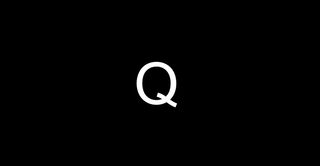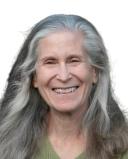Education
What to Do When QAnon Comes to Your Community
4 tips for addressing harmful conspiracies.
Posted September 2, 2020 Reviewed by Gary Drevitch

On August 22, my husband and I were driving through Ellsworth, Maine, a small city near our coastal community, when we noticed maskless protesters yelling to people in passing cars. While stopped at a traffic light, I read the signs they carried. One read “Stop Child Trafficking.” Another: “Keep your F#&%ing Hands off our Children” (with that word spelled out).
Human trafficking is among the many topics I teach about as a humane educator, so I was intrigued. Who were these people? Were they fellow human rights advocates? Why were they having a protest about saving children at this particular moment? What was the precipitating event that inspired the protest?
Then it hit me. These were probably QAnon conspiracy followers. QAnon conspiracists believe that a cabal of Democratic politicians, celebrities, and religious leaders (including Barack Obama, Hillary Clinton, Oprah Winfrey, Tom Hanks, Pope Francis, and the Dalai Lama), are Satan-worshipping pedophiles. According to the anonymous Q, these famous people not only molest children, they also eat them.
As unbelievable as this sounds, a rapidly growing number of people are falling into the QAnon rabbit hole, including recently-elected candidates for Congressional seats who are likely to win their races.
As someone who believes that critical and systems thinking are the foundation for solving problems; who promotes the teaching of solutionary thinking skills in schools; and who is generally optimistic about the prospect of creating a just, sustainable, and humane world through education, I’m usually prepared and eager to address whatever issues and problems arise in our society and world.
This time, however, I found myself completely unmoored. I felt like I’d been transported to 17th century Salem, Massachusetts during the witch trials when an irrational frenzy overtook otherwise rational people, and accused witches were executed, unable to defend themselves because lack of evidence of innocence was considered proof of guilt.
I wondered how I could possibly reach people who reject fact-checking through legitimate news sources (which they believe are purveyors of “fake news”), and who require no actual evidence to believe and promulgate the most far-fetched of crimes. At that moment, I had no idea how I could influence people to tease apart the real and horrific abuse of children, which absolutely needs our attention, from an entirely unsubstantiated conspiracy theory.
I was so shaken by this likely Q-influenced protest in my community that I posted about it on Facebook. More than 130 people commented. Some shared their dismay and concern; some shared links to articles and podcasts. A former member of a cult, who escaped through deprogramming, wrote about how to reach people who fall into cults. Some expressed that they had no idea who/what QAnon was, and one commented that her Sunday would now be dedicated to reading the articles and listening to the podcasts that others had shared.
But there was also a cryptic comment suggesting that these outlandish crimes were indeed happening and were “truth.” I didn’t know the Facebook friend who posted this, and I wrote a quick and perhaps too reactive reply that I’ve since deleted. Then I visited her timeline to see what else she believes and shares. There I found other conspiracy theories. Horrified to see debunked COVID “information” being promoted on her page, I did something I rarely do: I blocked her.
As I mentioned at the beginning of this post, I am a humane educator. It’s my job to teach about human rights, environmental sustainability, and animal protection and help people become solutionaries who solve problems rather than argue about them. If ever there was a moment when I was shirking my responsibility, blocking her was that moment. I was doing the opposite of what must be done, which is to compassionately connect and engage.
So I unblocked her and reached out to share a respectful point by point video rebuttal of one of the conspiracy movies she had shared on FB. She said she would watch it – a first step.
It can certainly be difficult, both emotionally and intellectually, to connect and engage with others whose views we may find appalling and dangerous. It’s natural to want to block those who upset, anger, and worry us. But if we are worried – and QAnon’s growing following is certainly a reason to be – then we mustn’t do what I initially did: avoid those people who are spreading unsubstantiated conspiracies and inaccurate information.
Here’s what we should do instead:
- Read about QAnon, its reach and cult-like impacts; fact-check sources; hone critical thinking skills; and prepare yourself to help friends and family do the same.
- Engage gently and kindly with even just one QAnon believer you know. Ask if they question any aspects of the conspiracy. If you can find an opening, however small, there is the possibility that they will think more critically.
- Acknowledge the terrible reality of child abuse, trafficking, and pedophilia and discuss ways to work together, with the help of legitimate child protection organizations, to uncover these horrors and end them.
- Expose the politicians peddling in QAnon conspiracies and the candidates who are running for Congress who believe in Q and work to prevent them from getting elected or re-elected.
While conspiracy theories abound, QAnon is particularly frightening, and Q’s following is growing quickly. Don’t wait until Q believers protest in your town. Do your research and speak out now.




